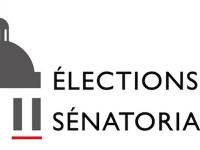Politics
ONE YEAR LATER THE FRENCH SENATORIAL ELECTIONS THE HCE CHECKS THE PARITY PROMISE
FIFTEEN MORE SEATS OCCUPIED NBY WOMEN

Senatoriale Elections 2017 (Source: French Senate )

Hgh Council of Equality between Men and Women
(Source: High Council of Equality between Men and Women)
(Source: High Council of Equality between Men and Women)
One year after the 2017 elections, the Senate is made up of 31.6% women, compared to 25% in 2014. This slight increase is the result of the application of the joint force in the departments concerned by the list-taking - +15 seats occupied by women - and effects of the law forbidding the plurality of mandates - +8 seats occupied by women.-------------------------------------------
The strategies put in place by the political parties to exclude women from the mandates always appear solid. In the departments concerned by proportional representation, nearly three quarters of the departments, women represented on the eve of the election more than 48% of the candidates. However, only a quarter of them were top of the list, in a context where often only the top candidate was elected. On the other hand, some candidates for their own reelection multiply their chances of being re-elected by creating a dissenting list of which they take the lead. The HCE welcomes the fact that the prohibition of multiple appointments in the departments concerned by the list vote effectively helps to free seats for women. In case of resignation for cumulative, the Senator is replaced by the second on the list. While women occupy the second place on the list, the prohibition of multiple office appears to be a lever for better representation of women in politics.-----------------------
However, as it stands, the prohibition of multiple mandates is not sufficient to achieve effective parity. Beyond that, although the number of women elected is increasing, equality of responsibility is far from being achieved within the institution. The positions of power remain occupied by men, with a president, five men among the eight vice-presidents, and two-thirds of men in the Conference of Presidents. The distribution of women and men in the committees also testifies to the persistence of stereotypes: the only commission in which women are in the majority is the Social Affairs Committee, when the Finance or Foreign Affairs Committees account for more than 80% of 'men. The evaluation of the application of the so-called equality laws in the Senate underlines that if the legal constraints are essential to increase the number of women elected, they are, in the state, insufficient to change the practices and the representations, and to reach to a real sharing of power. Source HCE
Liability for this article lies with the author, who also holds the copyright. Editorial content from USPA may be quoted on other websites as long as the quote comprises no more than 5% of the entire text, is marked as such and the source is named (via hyperlink).






